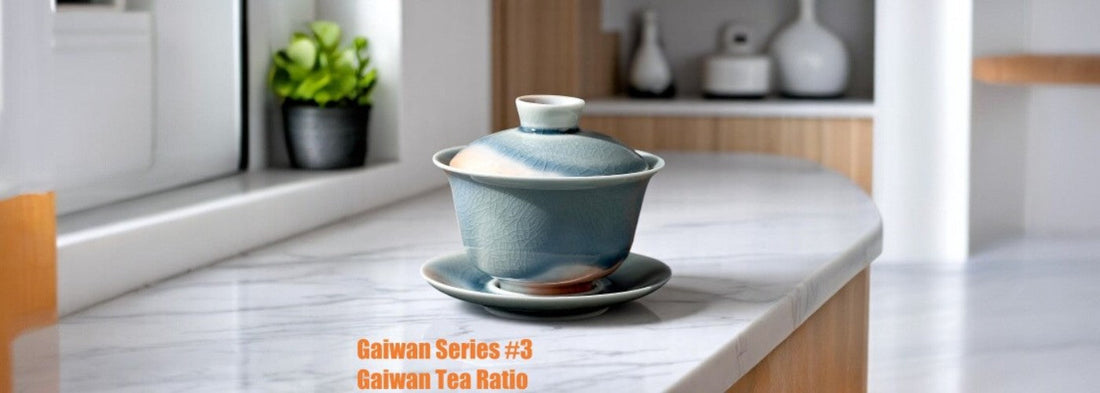
How Much Tea to Use in a Gaiwan: Tips for Leaf Ratio, Steeps & Flavor
Share
When I first started brewing tea with a gaiwan, I asked a question that sounds so simple—“How much tea should I use?” But the answers were anything but simple.
Some people said “just enough to cover the bottom,” others told me to weigh it in grams. Some used tablespoons, some used instinct. At first I felt lost.
Now, after many delicious (and a few too-strong) cups, I’ve found a balance that works—and I’ll share what I’ve learned here.
There’s No One Rule—But There Are Good Guidelines
Think of brewing tea in a gaiwan like cooking without a strict recipe. It’s more about the balance between leaf and water, and how strong or gentle you want the brew to be.
The most common guideline? 1 gram of tea per 15–20ml of water.
But that’s just the start. Leaf shape, tea type, and personal taste matter too.
How Much Tea to Use: Quick Guide by Tea Type
Here's a simple breakdown when I use with my 120ml gaiwan; but I also reach for a 220ml one when I want a longer session or to share. The ratios still hold up—just adjust for size and taste.
| Tea Type | Amount of Tea | Number of Steeps |
|---|---|---|
| Green tea | 2–3g | 3–4 steeps |
| White tea | 3–4g (fluffy!) | 4–5 steeps |
| Oolong tea | 4–6g | 6–8 steeps |
| Puerh | 4–5g | 6–10 steeps |
| Black tea | 3–5g | 3–5 steeps |
💡 Tip: Light, fluffy leaves (like white tea) take up more space but weigh less. Tightly rolled oolongs are dense—you’ll need fewer leaves by volume.
*My 115ml gaiwan—just the right size for solo gongfu brews and easy flavor control.
Other Factors That Change the Game
Even if you follow a leaf-to-water ratio, flavor can shift depending on:
- Leaf style: twisted, rolled, ball-shaped, compressed
- Tea age: aged puerh vs. fresh green
- Water temperature: hotter water pulls more flavor
- Your preference: stronger or lighter brews?
That’s why I always say: start small, adjust by taste.
How Do You Know When It’s Right?
A good brew in a gaiwan doesn’t hit you with bitterness or disappear on the first sip. You’ll know it’s right when:
- The tea opens up over multiple steeps
- You notice layered flavors: floral, sweet, mineral
- There’s a soft lingering feeling in your mouth after swallowing (called “hui gan” in Chinese)
Common Mistakes When Measuring Tea
Here are a few I’ve made (so you don’t have to):
- Filling the gaiwan halfway with leaves – sounds cool, but you’ll overwhelm yourself
- Underestimating rolled oolongs – they expand a LOT
- Using Western teapot logic – a gaiwan brews fast and strong; it’s not the same!
My Personal Method
These days, I don’t weigh tea every time. But when I try a new tea, I start with:
- 4g in my 120ml gaiwan
- 90–95°C water for oolong or black
- A quick rinse, then 10s steep → taste
- Adjust from there
It keeps things flexible and fun.
What’s Next?
In the next post, I’ll compare the gaiwan vs the teapot—which one suits your tea style, mood, and daily rhythm?
Until then, if you’re looking for a unique piece of gaiwan to practice your perfect pour, feel free to visit my store:
👉 www.delotuscrafts.com
—
Jessie @ DeLotus
Tea drinker, thoughtful packer, and curious wanderer.
